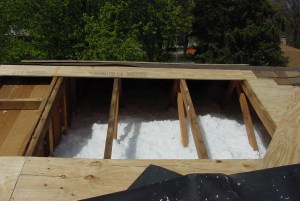
Warning signs that you need to add home insulation
- Only about 20% of homes built before 1980 had proper insulation installed. If your home is older, and you haven’t added insulation, it’s advised to do so.
- Your insulation is not at least 12” thick.
- Insulation appears blackened and moldy. This also indicates a moisture and ventilation issue.
- Falling, disintegrating or gaping areas of the home insulation.
What are my insulation options?

- Batts are commonly used, as they’re quite easy to install. Although, easy doesn’t mean that mistakes are also easily avoided. When laying batts, make sure they’re laid in the appropriate places and there are no gaps in-between.
- Spray Foam should be installed by a professional to ensure functionality, safety and the appropriate thermal barrier it requires. Spray foam tends to be a more expensive form of insulation.
- Rigid Foam Board can be quite expensive, but delivers high R-values, protects well and is fairly easy to install. It too requires an appropriate thermal heat barrier.
Determine the insulation’s R-value, or its ability to resist heat flow. The recommended R-value level for most attics in temperate climates is R-38.
- R-38 Thickness Measurements:
- Mineral Fiber Blankets or Batts = 11.5 to 12 inches
- Loose or Blown Fill: Fiberglass = 14-17¾ inches
- Loose or Blown Fill: Rock Wool = 12¼ inches
- Loose or Blown Fill: Cellulosic Fiber = 10.5 inches
Once installed, home insulation can last for decades. If it’s installed properly and does not get damaged, there should be zero maintenance needed for home insulation. As another benefit, the insulation that’s currently installed in the U.S. reduces carbon dioxide levels by 780 million tons each year, according to the North American Insulation Manufacturers Association (NAIMA).
It’s also said that proper insulation lowers home heating and cooling expenses by about 20%, according to NAIMA.
Don’t throw your money out the window — throw out your old insulation instead. If poor insulation has already caused damage to your home, contact Bloomfield Construction today.



